Domain Eukaryota Scientific name Ulva Rank Genus | Kingdom Plantae Higher classification Ulvaceae | |
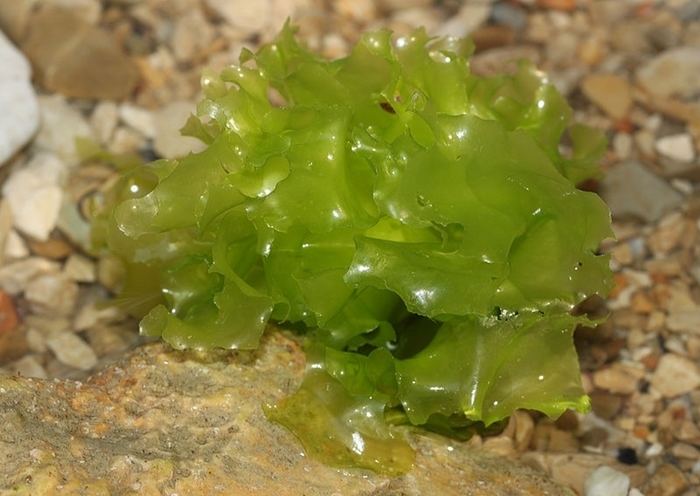 | ||
Lower classifications Similar Aonori, Water, Seaweed, Gracilaria, Wakame | ||
Sea lettuce at point lookout
The sea lettuces comprise the genus Ulva, a group of edible green algae that is widely distributed along the coasts of the world's oceans. The type species within the genus Ulva is Ulva lactuca, lactuca being Latin for "lettuce". The genus also includes the species previously classified under the genus Enteromorpha, the former members of which are known under the common name green nori.
Contents
- Sea lettuce at point lookout
- The seaweed lady on sea lettuce or ulva lactuca
- Description
- Nutrition and contamination
- Aquarium trade
- Health concerns
- Species
- References
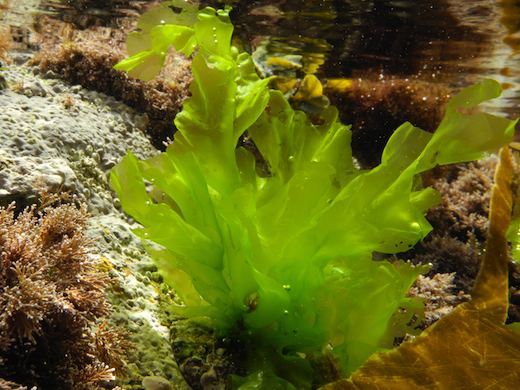
The seaweed lady on sea lettuce or ulva lactuca
Description
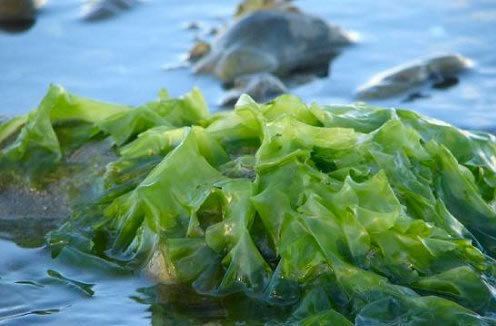
Individual blades of Ulva can grow to be more than 400 mm (16 in) in size, but this only occurs when the plants are growing in sheltered areas. A macroscopic alga light to dark green in colour, it is attached by disc holdfast.
Nutrition and contamination
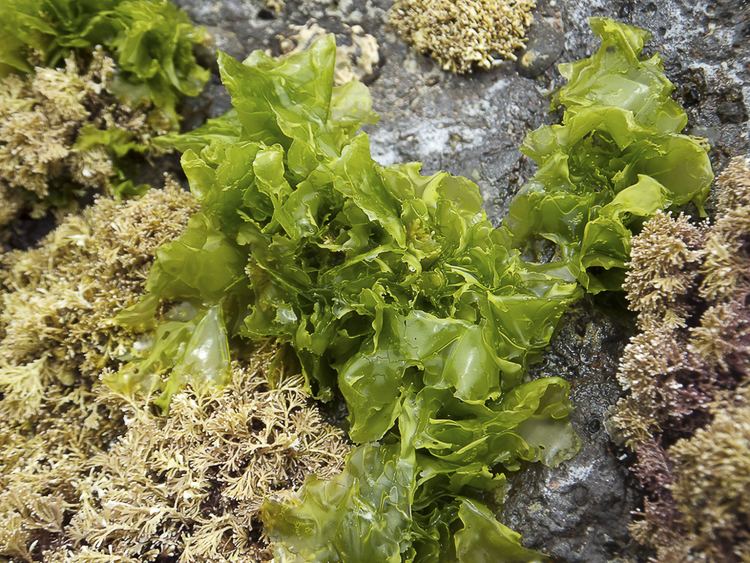
Sea lettuce is eaten by a number of different sea animals, including manatees and the sea slugs known as sea hares. Many species of sea lettuce are a food source for humans in Scandinavia, Great Britain, Ireland, China, and Japan (where this food is known as aosa). Sea lettuce as a food for humans is eaten raw in salads and cooked in soups. It is high in protein, soluble dietary fiber, and a variety of vitamins and minerals, especially iron. However contamination with toxic heavy metals at certain sites where it could be collected makes it dangerous for human consumption.
Aquarium trade
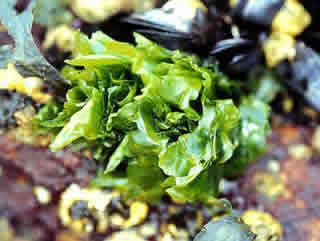
Sea lettuce species are commonly found in the saltwater aquarium trade, where the plants are valued for their high nutrient uptake and edibility. Many reef aquarium keepers use sea lettuce species in refugia or grow it as a food source for herbivorous fish. Sea lettuce is very easy to keep, tolerating a wide range of lighting and temperature conditions. In the refugium, sea lettuce can be attached to live rock or another surface, or simply left to drift in the water.
Health concerns
In August 2009, unprecedented amounts of these algae washed up on the beaches of Brittany, France, causing a major public health scare as it decomposed. The rotting leaves produced large quantities of hydrogen sulfide, a toxic gas. In one incident near Saint-Michel-en-Grève, a horse rider lost consciousness and his horse died after breathing the seaweed fumes; in another, a lorry driver driving a load of decomposing sea lettuce passed out, crashed, and died, with toxic fumes claimed to be the cause. Environmentalists blamed the phenomenon on excessive nitrogenous compounds washed out to sea from improper disposal of pig and poultry animal waste from industrial farms.
Species
Species in the genus Ulva include:
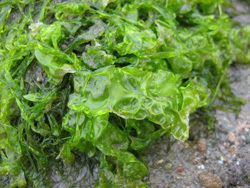
A newly discovered Indian endemic species of Ulva with tubular thallus indistinguishable from Ulva intestinalis has been formally established in 2014 as Ulva paschima Bast.
